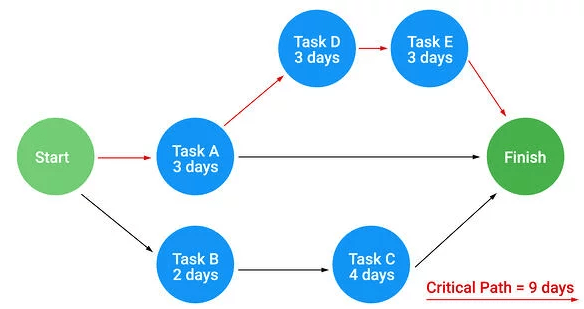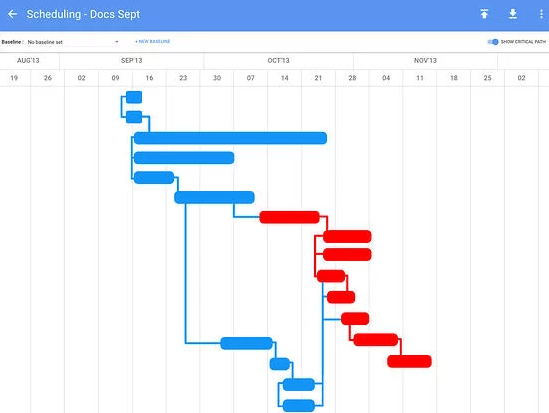Critical Path Method (CPM) is a defining resource for the construction industry. First developed in the late 1950s, the critical path method has been utilised in a variety of project development projects including engineering, aerospace and plant maintenance. CPM has rapidly become an essential staple for construction projects today, but many business owners are intimidated from what is perceived as a complex process.
The Critical Path Method is crucial to implement within your construction business, and can also protect your business from litigation in the instance of construction disputes. As for construction management, you need to develop a strong grasp of the CPM and learn the basic techniques required to successfully implement a Critical Path Method that your business can benefit from.

What exactly is critical about the Critical Path Method?
It doesn’t matter what type of project you undertake for any client – if you’re in business, you are already aware that a certain minimum time allowance is required for the completion of any project. The minimum time allocated includes a series of steps that logically follow a sequence of tasks. For example: when baking a cake, you would have to mix the batter, bake the cake and then ice it. There is a logical series of steps to achieve the desired finished result.
The length of time you allocate is the length of time you need to achieve completion. The next steps can only commence once the previous step has been completed. Regardless of what project you undertake – whether it is baking a cake, writing a book, cleaning an apartment or building a house – the process remains the same, and all the steps need to be taken in their logical sequence to reach completion.
Used across many industries, the critical path method is the staple of project scheduling. When time equals money in the construction industry, construction owners can utilise the CPM method to visualise and determine the project duration to be able to accurately quote. CPM was originally created with pencil and paper, however, advanced technology now exists which has made the technical process more simplistic to understand.
Builders often use CPM on major or large scale projects as the method is usually complex and requires greater expertise. Both contractors and owners of commercial or industrial structures rely on using CPMs to create a guideline for performance and to document delays. When a project is late, a construction worker can supply the CPM as evidence when needing to determine any faults or monetary damages.
Critical Path Methods allow project managers to calculate the resources and time needed for project completion. When good data is provided, using CPM can prevent construction schedule conflicts and coordinate timely task performance by maintaining a time schedule of what task needs to be done by a given time. Supervisors can optimise scheduling procurement and equipment usage, improve productivity and decrease labour costs.
How to create a Critical Path Method
A CPM is only as good as the data you put into it. You need to include every activity, task or step that your project requires to achieve completion. Start by developing a WBS (work breakdown structure). Identify all the activities you must undertake to take your project to completion. Arrange the tasks in the correct logical order that they need to be taken and use task milestones to connect them.
For every task, ask three questions:
– Which task precedes this task?
– Which task will immediately follow this task?
– Which task can be concurrent with this task?
Once you have identified these questions, you’re then able to create a network diagram displaying logical project sequence that results in successful project completion.
As a project manager, you need to calculate early start and early finish dates, as well as late start and late finish dates for every task. You can calculate these by doing a forward pass through CPM path charts. Identify which tasks in logical order you are able to find the earliest dates, and add the task duration to determine what the earliest date is that your task can finish. To identify late starts and finishes, the same method applies but in reverse order by doing a backward pass through your CPM chart.
Utilising Gantt Charts
Gantt charts are an effective way to schedule projects and monitor project process against your deadline – a simple but ultra-effective planning tool that displays your project’s start and end dates of individual tasks as a horizontal bar graph. It can be created as a spreadsheet, however, for larger, more complex projects it is best to use project management applications. The chart consists of a horizontal axis that details your project time span, and a vertical list of all individual tasks requiring completion.
Advantages of using a Gantt Chart include being able to effectively monitor your project performance and set priorities or alter priorities as needed, and your team members will be able to easily view what needs to be done, and when it needs to be done by.

Construction planners and critical path methods
The core function of CPM is to assist everyone in comprehending how individual tasks fit within the actual complete project schedule. It’s also about matching equipment and resources with the allocated tasks and timeframe, and can help reduce project expenses. Many clients can request a detailed CPM schedule so they can monitor the progress of the project in accordance with their provided budget.
CPM is essential for major construction projects without a detailed schedule. Large construction companies will require formal schedules for more complex structures. While CPM involves maths and can be viewed as somewhat complex, the calculations are not difficult and available construction software programs today make creating CPMs incredibly simple.





